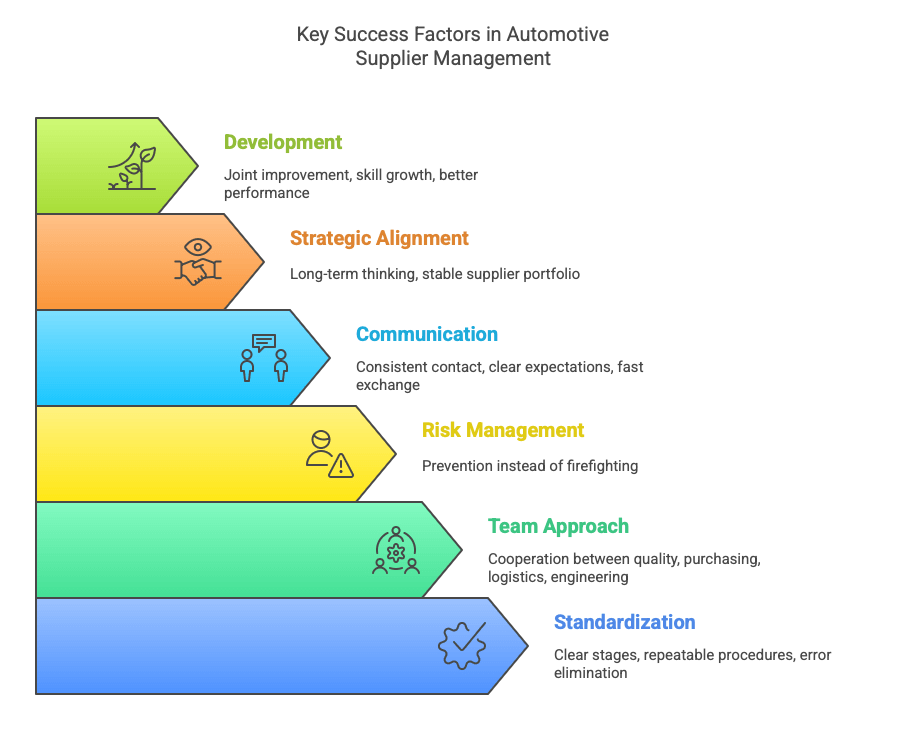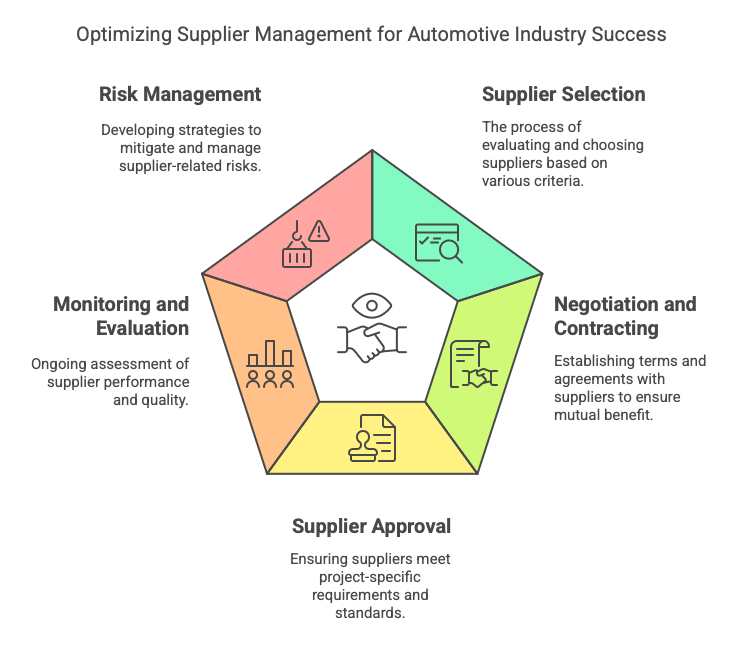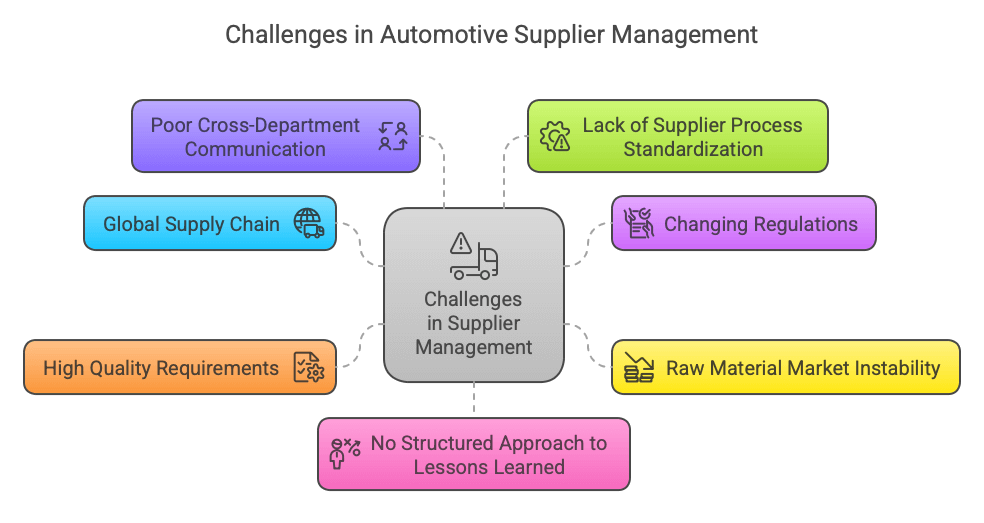Supplier management is a key element of the operational strategy in manufacturing companies. The way this process is handled has a significant impact on product quality, costs, and delivery timeliness – all of which are critical for maintaining uninterrupted production.
In today’s global manufacturing environment, working with suppliers from various regions across complex supply chains is the norm. This brings both opportunities and risks, especially in logistics, quality control, and compliance with legal and industry standards.

Supplier management faces multiple challenges: raw material market volatility, evolving international regulations, geopolitical or economic conflicts, and increasingly strict quality requirements. To remain competitive and ensure production continuity, companies must continually improve their approach.
One area that can be optimized to reduce the impact of external factors is supplier management itself. The way we manage suppliers depends on the context of our organization, the nature of our business, and numerous requirements stemming from international standards. We must also consider the obligation to cascade our customers’ requirements throughout the entire supply chain.
So how do we stay on top of all these requirements, protect our processes, and avoid waste?
The key lies in standardizing the entire supplier collaboration process and designing it in a way that no critical element is overlooked.

Supplier Management – Key Stages from a Quality Perspective
1. Supplier Selection
Choosing the right supplier is one of the most important steps in supply chain management. Companies should evaluate potential suppliers based on risks and opportunities using relevant criteria such as product quality, production capabilities, compliance with industry standards, financial stability, and location.
The qualification process includes verifying financial health, analyzing quality certificates, conducting system and/or process audits, trial deliveries, and lab testing of components. The tools and criteria used should align with industry and customer-specific requirements.
It’s also essential to consider long-term business strategy. Building a portfolio of suppliers who can support multiple projects gives a stronger negotiation position and fosters long-term collaboration.
2. Negotiation and Contracting
Once we select the supplier, the next step is to negotiate the terms of cooperation. This often focuses on pricing and timelines – but is that enough?
From a quality and risk perspective, it’s crucial to address all known quality-related issues at this early stage. This reduces the chance of misunderstandings or nonconformities. This is also the time to apply lessons learned from past projects.
3. Supplier Approval in Projects
Beyond the initial qualification, each supplier must also be approved for specific projects. It’s important to ensure that both their product and processes meet mutual requirements – both ours and the customer’s.
This includes not only product validation, but also agreements on logistics, finance, service, and communication. Before giving the green light for serial production, we need to discuss and agree on all critical aspects.
If any gaps are identified, a realistic action plan should be created together with the supplier, while continuing to build a knowledge base for future projects (lessons learned).
4. Supplier Monitoring and Evaluation
Approval is not the end of the process – continuous monitoring and evaluation are necessary to support supplier development and improve our own processes.
Ongoing supplier evaluation is essential to maintain quality and delivery efficiency. It helps detect issues early and enables quick corrective actions. How should it be done?
There’s no one-size-fits-all answer – it depends on the industry, identified risks, and customer expectations.
5. Supplier Management – How to Effectively Minimize Risk?
Working with suppliers involves risks such as delays, quality issues, and financial instability. To mitigate these risks, companies implement supplier diversification strategies and contingency plans.
When issues arise, fast reaction and effective corrective actions are critical to avoid production downtime or increased operational costs. This stage tests your management system – it validates your emergency plans, organizational awareness, and above all, communication.
6. Continuous Improvement of Collaboration
Supplier development is a win–win scenario. For the customer, a supplier that continuously improves reduces business risk. For the supplier, improving processes creates opportunities for long-term partnerships and market competitiveness.
Supplier development programs may include support in implementing quality standards, optimizing logistics processes, and introducing innovations. Success depends on awareness and willingness to collaborate from both sides.

In summary, effective supplier management in the automotive industry is a complex, multi-stage process that requires continuous attention, improvement, and adaptability to dynamic market conditions.
Careful supplier selection, data-driven decision-making, thorough risk analysis, and a long-term cooperation mindset help organizations build stable and efficient supply chains.
Let’s remember – in the supplier–customer relationship, there are no winners or losers. Success (or failure) depends on the engagement and maturity of both parties.
Author: Klaudia Jabłońska


